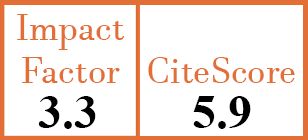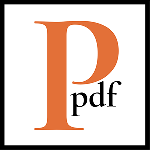Full Papers
Modification of 2022 ACR/EULAR ANCA-associated vasculitis classification criteria in a Japanese cohort (J-CANVAS)
N. Tanaka-Mabuchi1, T. Kida2, S. Hanai3, Y. Kobayashi4, S. Omura5, Y. Abe6, M. Kadoya7, N. Takizawa8, A. Nomura9, Y. Kukida10, N. Kondo11, Y. Yamano12, T. Yanagida13, K. Endo14, S. Hirata15, K. Matsui16, T. Takeuchi17, K. Ichinose18, M. Kato19, R. Yanai20, Y. Matsuo21, Y. Shimojima22, R. Nishioka23, R. Okazaki24, T. Takata25, T. Ito26, M. Moriyama27, A. Takatani28, Y. Miyawaki29, N. Yajima30, T. Ito-Ihara31, T. Kawaguchi32, Y. Kawahito33, D. Nakagomi34
- Department of Rheumatology, University of Yamanashi Hospital, Yamanashi, Japan.
- Inflammation and Immunology, Graduate School of Medical Science, Kyoto Prefectural University of Medicine, Kyoto, Japan.
- Department of Rheumatology, University of Yamanashi Hospital, Yamanashi, Japan.
- Department of Rheumatology, University of Yamanashi Hospital, Yamanashi, Japan.
- Inflammation and Immunology, Graduate School of Medical Science, Kyoto Prefectural University of Medicine, Kyoto, Japan.
- Department of Internal Medicine and Rheumatology, Juntendo University, Tokyo, Japan.
- Center for Rheumatic Disease, Japanese Red Cross Society Kyoto Daiichi Hospital, Kyoto, Japan.
- Department of Rheumatology, Chubu Rosai Hospital, Nagoya, Japan.
- Immuno-Rheumatology Center, St. Luke's International Hospital, Tokyo, Japan.
- Department of Rheumatology, Japanese Red Cross Society Kyoto Daini Hospital, Kyoto, Japan.
- Department of Nephrology, Kyoto Katsura Hospital, Japan.
- Department of Respiratory Medicine and Allergy, Tosei General Hospital, Aichi, Japan.
- Inflammation and Immunology, Graduate School of Medical Science, Kyoto Prefectural University of Medicine, Kyoto; and Department of Hematology and Rheumatology, Kagoshima University Hospital, Japan.
- Department of General Internal Medicine, Tottori Prefectural Central Hospital, Japan.
- Department of Clinical Immunology and Rheumatology, Hiroshima University Hospital, Japan.
- Department of Diabetes, Endocrinology and Clinical Immunology, Hyogo Medical University School of Medicine, Japan.
- Department of Internal Medicine (IV), Osaka Medical and Pharmaceutical University, Japan.
- Department of Immunology and Rheumatology, Division of Advanced Preventive Medical Sciences, Nagasaki University Graduate School of Biomedical Sciences; and Department of Rheumatology, Shimane University Faculty of Medicine, Japan.
- Department of Rheumatology, Endocrinology and Nephrology, Graduate School of Medicine, Hokkaido University; and The First Department of Internal Medicine, University of Toyama Faculty of Medicine, Toyama, Japan.
- Division of Rheumatology, Department of Medicine, Showa University School of Medicine, Japan.
- Department of Rheumatology, Tokyo Kyosai Hospital; and Department of Rheumatology, Graduate School of Medical and Dental Sciences, Institute of Science Tokyo (formerly Tokyo Medical and Dental University), Japan.
- Department of Medicine (Neurology and Rheumatology), Shinshu University School of Medicine, Japan.
- Department of Rheumatology, Graduate School of Medical Science, Kanazawa University, Japan.
- Division of Respiratory Medicine and Rheumatology, Department of Multidisciplinary Internal Medicine, Faculty of Medicine, Tottori University, Japan.
- Division of Gastroenterology and Nephrology, Tottori University, Japan.
- Division of Nephrology, Department of Internal Medicine, Teikyo University Chiba Medical Center, Japan.
- Department of Rheumatology, Shimane University Faculty of Medicine, Japan.
- Rheumatic Disease Center, Sasebo Chuo Hospital; and Department of Public Health, Nagasaki University Graduate School of Biomedical Science, Japan.
- Department of Nephrology, Rheumatology, Endocrinology and Metabolism, Okayama University Graduate School of Medicine, Dentistry and Pharmaceutical Sciences, Japan.
- Division of Rheumatology, Department of Medicine, Showa University School of Medicine, Japan.
- The Clinical and Translational Research Center, University Hospital, Kyoto Prefectural University of Medicine, Japan.
- Department of Clinical Assessment, Tokyo University of Pharmacy and Life Sciences, Japan.
- Inflammation and Immunology, Graduate School of Medical Science, Kyoto Prefectural University of Medicine, Kyoto, Japan.
- Department of Rheumatology, University of Yamanashi Hospital, Yamanashi, Japan. dnakagomi@hotmail.co.jp
CER19080
Full Papers
Free to view
(click on article PDF icon to read the article)
PMID: 41231443 [PubMed]
Received: 07/07/2025
Accepted : 13/10/2025
In Press: 07/11/2025
Abstract
OBJECTIVES:
The 2022 American College of Rheumatology/European Alliance of Associations for Rheumatology (ACR/EULAR) classification criteria (the 2022 ACR/EULAR criteria) for anti-neutrophil cytoplasmic antibody (ANCA)-associated vasculitis (AAV) were recently published. This study aimed to evaluate the accuracy of these criteria in Japanese patients with AAV using data from the Japan Collaborative Registry of ANCA-associated Vasculitis (J-CANVAS).
METHODS:
This multicentre retrospective cohort study analysed patients with microscopic polyangiitis (MPA), granulomatosis with polyangiitis (GPA), and eosinophilic granulomatosis with polyangiitis (EGPA). The 2022 ACR/EULAR criteria were applied to J-CANVAS participants to determine diagnostic performance, including sensitivity and specificity. A modified version of the 2022 ACR/EULAR criteria (the modified criteria) was subsequently developed, and its performance was compared with that of the 2022 ACR/EULAR criteria.
RESULTS:
In the J-CANVAS cohort, sensitivity values for MPA, GPA, and EGPA using the 2022 ACR/EULAR criteria were 96.1%, 48.5%, and 84.6%, respectively, while specificity values were 70.0%, 95.9%, and 98.0%, respectively. The modified criteria improved sensitivity to 90.7%, 83.8%, and 96.2% for MPA, GPA, and EGPA, respectively, and specificity to 86.7%, 99.0%, and 95.8%, respectively, with consistently higher AUC values.
CONCLUSIONS:
The modified criteria improved the accuracy of AAV classification in Japanese patients.



